In the past year, digital transformation has accelerated by up to seven years. Many organisations who’ve invested in the process found themselves surprised by their digital initiatives’ speed and success. Most businesses expect the changes they’ve made to be long-lasting, and they’re making investments to ensure new strategies and practices are integrated into their operations.
If your professional services organisation is ready to invest in digital transformation, you’ll need to gain clarity on three essential elements:
- Goal setting
- Brand positioning
- Internal and external benchmarks

A digital strategy framework works as a roadmap to get your firm where it digitally wants to go. It also helps you make decisions that maximize competitive advantage and create value via how you operate and deliver value to your customers and clients.
Knowing What You Want Your Digital Strategy to Accomplish
Goal setting lets you know where you are and where you want to go. It helps you understand the role digital marketing, aka your digital strategy, will play in helping you meet your goals. To get a clear picture of what success looks like to your organisation, you need to define your market, your place in it, and which digital tools and techniques you’ll use to ensure the success of your digital marketing efforts.

A solid digital strategy is needed for:
- In-depth business discovery. A digital strategy framework enables you to interact with your target audience and deliver exceptional customer experiences that create value for the customer and your brand.
- Providing direction. Traditional organisational strategies have focused on which technologies to invest in. Digital strategies look at the activities and processes that must be transformed to provide optimal services for your clients.
- Ensuring there are no missed opportunities. A successful digital transformation creates a foundation for future business. It gives you the ability to reinvent yourself as necessary when markets, services, and customer needs change. A digital strategy should be visionary enough to imagine what opportunities might present themselves in the years ahead.
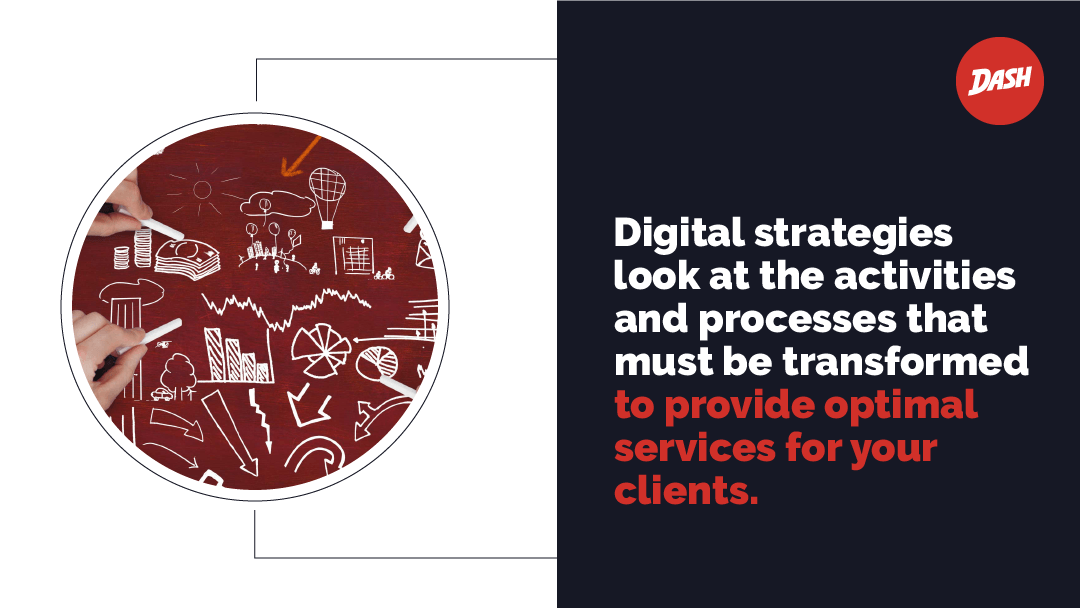
- Reaching your target audience where they are online. Audience targeting uses data to segment your customers by things like demographics or interests. The goal is to reach the right people on the right device at the right moment. Targeting lets you connect with potential customers who are already interested in or searching for your unique products and services.
- Brand differentiation. It’s pretty simple: do you want to blend in with or stand out from the competition? Brand differentiation gives people the reasons they need to choose your professional services organisation over all the others. It should not focus on price; instead, it should highlight the benefits you offer that your competition does not and how your solution solves unique problems other firms can’t.
- Tracking ROI. All marketing initiatives must be tracked for return on investment. Measuring ROI helps you determine what about your digital strategy is working and what can be changed to improve results. When you track, measure, analyze, and improve your digital marketing ROI, you’re better able to run successful marketing campaigns and grow your professional services business.
Still unclear on what your digital strategy should look like? Let’s dig a little deeper.

Digital Transformation/Digital Strategy Framework Explained
A framework for digital strategy is merely the blueprint for how your organisation will implement and integrate digital solutions into existing processes and procedures. It involves:
- Clear targets. Companies often start the digital marketing conversation by saying, “we want to be on Facebook and YouTube.” But that’s a bottoms-up approach that skips the fundamental steps of the digital marketing process. Put another way, why would anyone start posting to social media channels when they haven’t yet identified who they’re trying to reach—or even what their message is? Your digital framework should begin with identifying business objectives, listing goals, and defining desired outcomes.

- Management buy-in. Cultural buy-in is an absolute must for any successful switch to a digital framework. Business leaders know digital transformations are difficult to execute. Many resist rocking the boat and would rather stick with the processes that have been in place for years or decades. But companies that have high leadership engagement and alignment are the ones that tend to succeed at digital strategies.
- Early, easy wins. By definition, digital transformation involves substantial changes to business as usual. If you want to build momentum toward loftier digital goals, it helps to initially target what many in the field call “easy wins.” With digital marketing, this can mean transforming an existing website or building a new one to drive new business and differentiate your brand. You can also invest in a digital marketing program that generates and nurtures new business relationships.
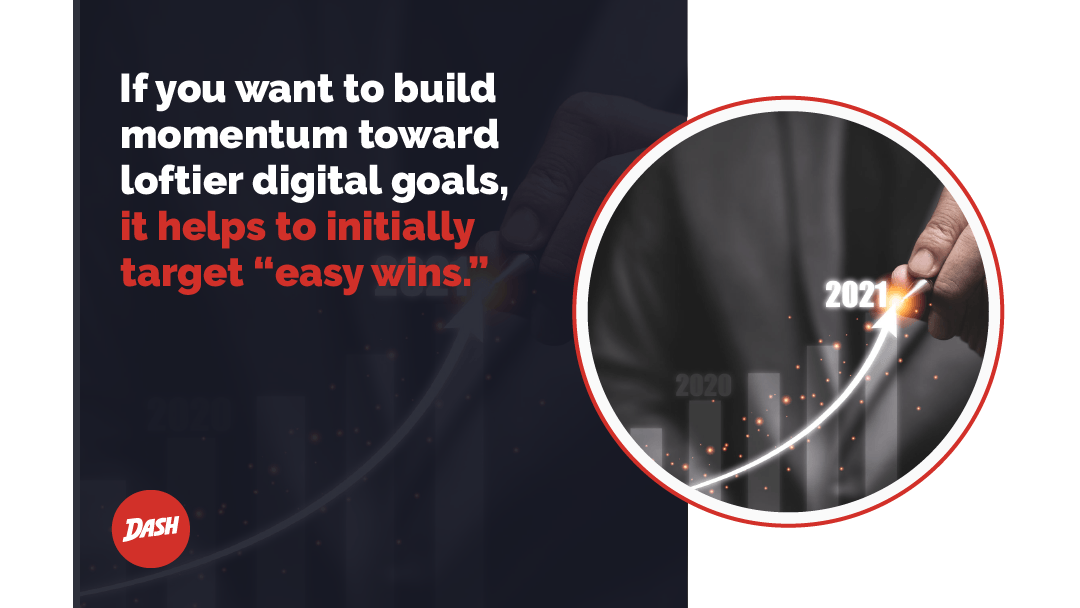
A great visual for differentiating digital transformation, digital strategy, and a digital marketing strategy is Russian nesting or Matryoshka dolls.
- The largest or outer doll represents digital transformation and includes all the new tools, technologies, and tactics being implemented across your entire business processes.
- The medium doll is the digital strategy for how your digital transformation is going to roll out.
- The smallest, inner doll is your digital marketing strategy and is a subset of your overall digital strategy.
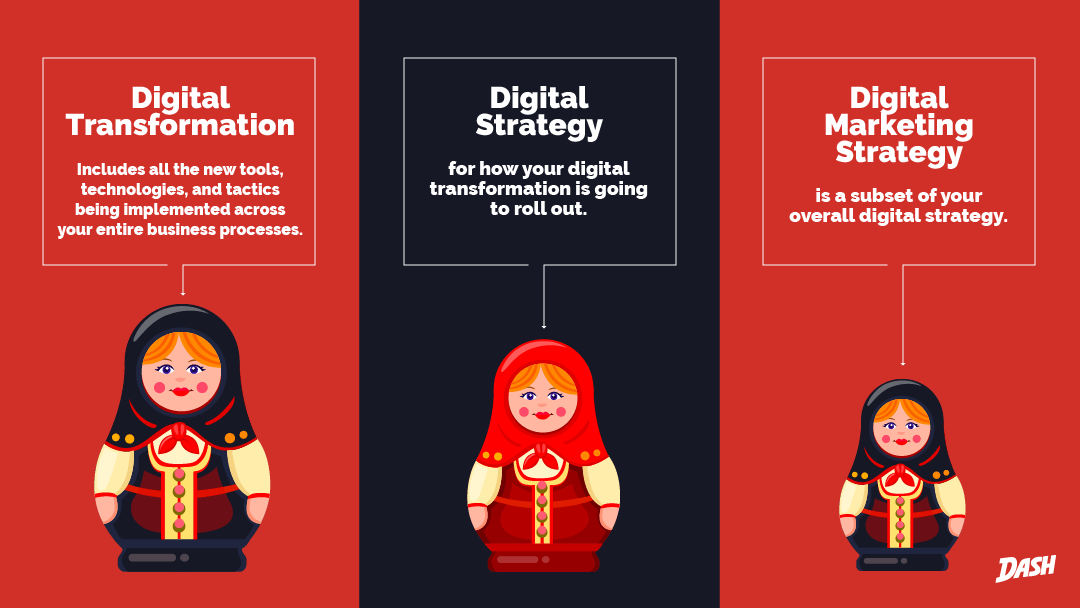
The dolls all work together to help your professional services organisation adapt to new market realities, increase your reach, and protect your market share from competitive threats.
For a digital transformation to be successful, it must permeate through the organisation. It requires an open-minded approach and an understanding of how different technologies can be used to collect data, help employees work, and improve the customer experience. Examples of successful digital transformations include:
- IKEA, which used new technologies to change the shopping experience for customers while optimizing operations costs. The company acquired Task Rabbit in 2017, which allowed it to offer assembly services to customers. The home furnishings giant also implemented a “smart home” project and an augmented reality feature in its IKEA Place app. Its Space10 project is a research and exhibition center where new digital concepts are developed and showcased.

- Software sales leader Microsoft underwent its own digital transformation, responding to changing customer needs by expanding its strategy beyond Windows. It opened up the platform to mobile devices and invested in cloud computing. It’s also introduced open APIs so programmers can more easily access the company’s software.
- BakerHostetler, one of the largest law firms in the U.S., has a global client base. It has invested heavily in emerging technologies to help its clients optimize their operations and build businesses with digital foundations. In 2016, the firm employed “Ross,” its first AI lawyer, to work in its bankruptcy practice. The firm believes its embrace of new digital technologies helps it enhance the services it delivers to customers.
These are just a few of the ways companies in diverse industries are using digital innovations to update their business operations, including digital marketing. As a result, their sales have soared, and they’ve become leading examples of business innovation.

What Should a Digital Strategy Include?
This is where we return to the 3Bs that we’ve talked about in previous posts: buyer, brand, and build. From where we sit, they’re the three core elements of any digital strategy and involve asking:
- Who are your buyers?
- What are your buyers’ problems; what is their journey?
- What message and position are you going to put into the market to align with those buyers?

- How will you, over time, create and nourish relationships and present yourself as the clear choice in a particular segment of the market?
- What’s the infrastructure, or build, you need to put in place? For instance, is your organisation’s website equipped to consistently deliver your message to the targeted buyer and capture leads? Do you have marketing automation to regularly deliver messaging to leads over time?
Your digital strategy should cover how the 3Bs, just like our nesting dolls, will work together to help accomplish the main goal you set for your digital strategy.
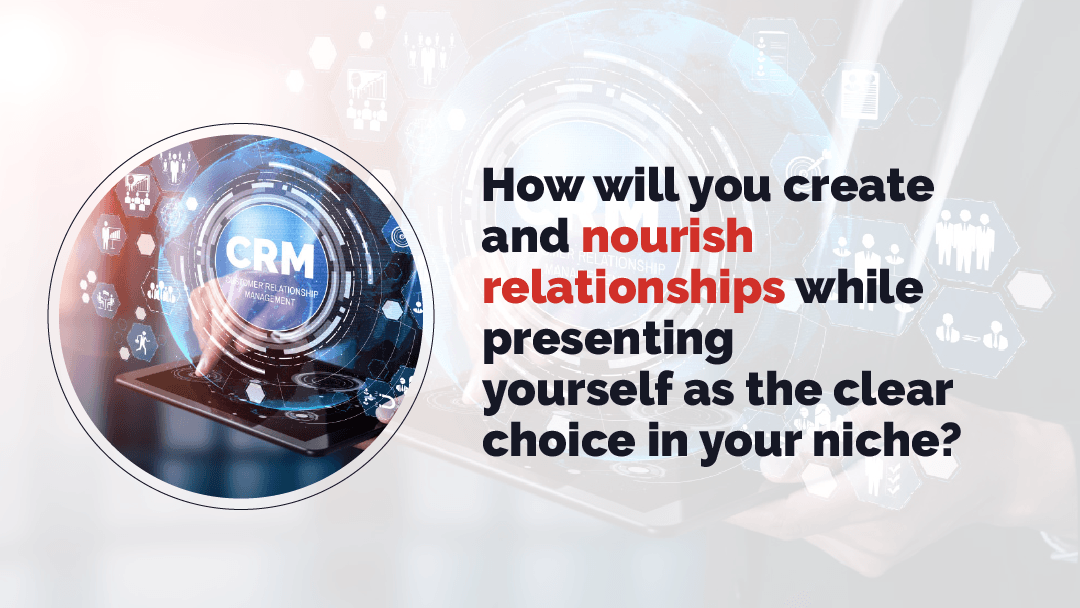
How Benchmarking Gives You a Strong Starting Position
Benchmarking is a practical approach to establishing baselines, defining best practices, identifying improvement opportunities, and creating a competitive environment. You might say that:
- Benchmarks are the “what” and
- Benchmarking is the “how.”
Benchmarking differs from competitor research in that it focuses on best practices instead of performance measures, is needed to maintain a competitive edge and isn’t just a “nice to have,” and adapts to targeted customer needs rather than mirroring the competition’s approach.
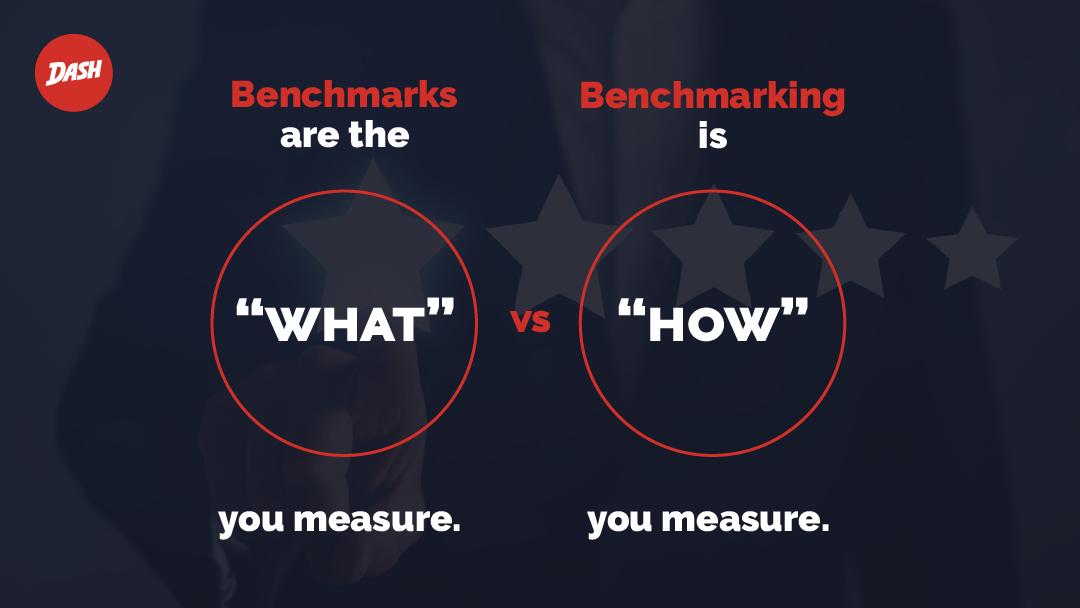
There are three categories of benchmarking:
- Internal benchmarking for when an organisation already has established and proven best practices.
- Competitive benchmarking, which is used when a business wants to evaluate its position within its industry.
- Strategic benchmarking, which takes a long-term view of company direction relative to future strategies of competing businesses.
For many professional services organisations, benchmarking can be as simple as looking at, within the context of their set goal, where are they sitting now? Let’s make it clearer using a little math.

Say, for instance, you want your firm to see a 20% growth in business over the next 12 months.
- We begin by looking at how much you grew in the prior 12 months.
- Then we take a look at how many leads you have coming in from your digital strategy at the moment.
- To increase leads by 20%, we must define what improvements, investments, or changes you’re making have to cover.
- We then want to make sure that whatever you’re trying to accomplish has the ROI required to warrant the investment in the first place.
Get Started Now on Improving Your Professional Services Organisation’s Digital Presence
Richard Suskind, Chair of the Advisory Board and a visiting professor at the Oxford Internet Institute, once said, “the competition that kills you won’t look like you.” In his view, organisations that embrace digital strategies are better equipped to anticipate market changes, react faster than their competitors, and adapt their strategies to keep pace with disruptive events.

If your organisation’s established ways of gaining new business and boosting profits aren’t delivering the results you want, investing in digital transformation is a strategic response that can revitalize your professional sales organisation and set it apart from the competition. Regardless of the services you provide, building a digital strategy framework can be the guiding beacon that leads everyone in your organisation toward an end goal of a revitalised, successful business.



